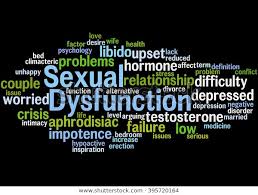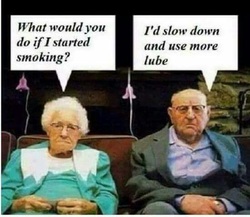SEXUAL WELL BEING
This page will provide information on on ISSUES with sexuality such as sexual dysfunction and SEXUAL HEALTH information to keep you and those you engage with sexually safer
SEXUAL HEALTH
Sexual Health is about more than just the absence of disease, it is about protecting yourself physically and emotionally as well.
Here you will find some basic information on sexually transmissible infections (STI), what they are, how they are transmitted and how to practice safer sex. Different types of sexual activity are explained in the SEX topic under the BODY section
Sexually Transmissible Infections - STIs
STIs are transmitted by sharing sexual fluids, blood, or skin on skin contact and come in 3 main forms:
BACTERIAL: Chlamydia, Syphilis, Gonorrhea
VIRAL: Genial Warts (HPV), HIV, Herpes (HSV)
PARASITES: Pubic Lice
The best way to protect yourself during sexual activity is to use a barrier (latex or polyurethane) such as a condom (on penis or toys penetrating vagina,anus or mouth), gloves (digital penetration of vagina or anus) or dam (oral/vaginal or oral/anal sex).
Dr Doe explains some of the STIs here, for more information click on the green highlighted words
BACTERIAL: Chlamydia, Syphilis, Gonorrhea
VIRAL: Genial Warts (HPV), HIV, Herpes (HSV)
PARASITES: Pubic Lice
The best way to protect yourself during sexual activity is to use a barrier (latex or polyurethane) such as a condom (on penis or toys penetrating vagina,anus or mouth), gloves (digital penetration of vagina or anus) or dam (oral/vaginal or oral/anal sex).
Dr Doe explains some of the STIs here, for more information click on the green highlighted words
ISSUES
This is where you will find information about sexual dysfunction or any other issues may have with your sexuality or sexual well being.
|
Desire

Lack of desire - a lack of desire can be caused by health issues, medication, hormonal changes, stress as well as psychological, emotional and relationship issues.
Desire discrepancies - differences in desire are not unusual in relationships and there are several ways that this can be dealt with. Communication is key to negotiating a regularity of sex that everyone is happy with.
Dr Doe talks about this here
Desire discrepancies - differences in desire are not unusual in relationships and there are several ways that this can be dealt with. Communication is key to negotiating a regularity of sex that everyone is happy with.
Dr Doe talks about this here
Arousal

Lack of arousal - lack of arousal can have a physical, emotional or psychological cause.
Slow arousal - slow arousal can be caused by physical changes or psychosocial issues.
Fast arousal - too fast arousal is often a part of rapid ejaculation and can be treated with therapy, it is not common in women. It is important to remember that rapid ejaculation is diagnosed when there is less than 2 min between penetration and ejaculation. Generally ejaculation can occur between 5-20 minutes and the average time for ejaculation is 5.4 min.
Dr Doe talks about arousal here
Slow arousal - slow arousal can be caused by physical changes or psychosocial issues.
Fast arousal - too fast arousal is often a part of rapid ejaculation and can be treated with therapy, it is not common in women. It is important to remember that rapid ejaculation is diagnosed when there is less than 2 min between penetration and ejaculation. Generally ejaculation can occur between 5-20 minutes and the average time for ejaculation is 5.4 min.
Dr Doe talks about arousal here
Function

Erectile Dysfunction (ED) - ED often has a physical reason and can often be a sign of a health issue such as heart disease or diabetes, it is important to have this checked before taking medications. There may also be other psychological or relationship issues as well.
Check out a great infographic here.
Rapid Ejaculation - often stress and fear of failure come into play here, though there can be other psychological issues as well. Dr Doe explains it here
Delayed Ejaculation (DE) - Ejaculation takes a long time of does not occur.
Dyspareunia -is an issue with pain during sexual activity, it may have physical or psychological issues. Vaginismus and Vulvodynia are two of several causes of pain during sex.
Vaginismus - an involuntary tightening of the vagina that makes penetration painful or impossible. Find out more here. Another explanation here
Vulvodynia - Painful sex _More info here
Orgasmic issues - some people may have no issue with desire or arousal but may be unable to orgasm, more common in women with some women never having had an orgasm.
Anorgasmia website here
Dr Doe discusses orgasms here
Check out a great infographic here.
Rapid Ejaculation - often stress and fear of failure come into play here, though there can be other psychological issues as well. Dr Doe explains it here
Delayed Ejaculation (DE) - Ejaculation takes a long time of does not occur.
Dyspareunia -is an issue with pain during sexual activity, it may have physical or psychological issues. Vaginismus and Vulvodynia are two of several causes of pain during sex.
Vaginismus - an involuntary tightening of the vagina that makes penetration painful or impossible. Find out more here. Another explanation here
Vulvodynia - Painful sex _More info here
Orgasmic issues - some people may have no issue with desire or arousal but may be unable to orgasm, more common in women with some women never having had an orgasm.
Anorgasmia website here
Dr Doe discusses orgasms here
AGEING
There are many ways that ageing can impact on our sexual functioning as mentioned above. But research shows that most people wish to remain sexually active for as long as possible, the type of sex may change over time but it still brings the same pleasure and connection.
Dr Doe talks to her grandmother here about sex in the later years.
Dr Doe talks to her grandmother here about sex in the later years.
BODY IMAGE
Issues with body image can have a devastating impact on our sexuality and sensuality. The media and sometimes those around us can all give us negative messages on what our body should look like and how it should perform. Developing a loving relationship with our body can sometimes take a lot of time and effort but it is worth it. Sometimes our body may not perform the way we would like or we may not like some of our body parts or even our whole body, but even though we may feel that our body is letting us down (and some of that could be because of things we have or have not done with our bodies) there is always something that we can be grateful for, we breathe, our blood pumps, our limbs move our senses inform our world, finding something every day to be grateful for can help to start turning around the way we see and feel about our bodies.....without them we would not be here.
PARAPHILIAS

There are many paraphilias, and they are really not an issue unless they are illegal, non consensual or hurt yourself or others. Some paraphilias are illegal where they impact on others in a negative way and are non consensual for others. Below is a list of paraphilias that may be seen as disorders, with many of these education and information can reduce a person's distress over an activity an. reduce the incidence of the behviour becoming a disorder, that does not involve harm to others and is consensual between adults.
There will be further information on some of the activities listed below that are performed between consenting adults and do no harm to self or others, in the KINK-BDSM link.
For more about paraphilias with Dr Doe here
Characteristics of Paraphilic Disorders
Most people with atypical sexual interests do not have a mental disorder. To be diagnosed with a paraphilic disorder, DSM-5 requires that people with these interests:
•feel personal distress about their interest, not merely distress resulting from society’s disapproval;
or
•have a sexual desire or behavior that involves another person’s psychological distress, injury, or
death, or a desire for sexual behaviors involving unwilling persons or persons unable to give legal
consent.
Many different paraphilias have been identified, but the American Psychiatric Association’s Diagnostic and Statistical Manual of Mental Disorders, Fifth Edition (DSM-5), lists the following 8 specific paraphilic disorders[1] :
Other paraphilias, almost any of which could develop into a paraphilic disorder in certain circumstances, include (but are not limited to) the following:
There will be further information on some of the activities listed below that are performed between consenting adults and do no harm to self or others, in the KINK-BDSM link.
For more about paraphilias with Dr Doe here
Characteristics of Paraphilic Disorders
Most people with atypical sexual interests do not have a mental disorder. To be diagnosed with a paraphilic disorder, DSM-5 requires that people with these interests:
•feel personal distress about their interest, not merely distress resulting from society’s disapproval;
or
•have a sexual desire or behavior that involves another person’s psychological distress, injury, or
death, or a desire for sexual behaviors involving unwilling persons or persons unable to give legal
consent.
Many different paraphilias have been identified, but the American Psychiatric Association’s Diagnostic and Statistical Manual of Mental Disorders, Fifth Edition (DSM-5), lists the following 8 specific paraphilic disorders[1] :
- Voyeuristic disorder (watching people)
- Exhibitionistic disorder (exposing genitals to others)
- Frotteuristic disorder (rubbing up against others)
- Sexual masochism disorder (receiving pain)
- Sexual sadism disorder (causing pain)
- Pedophilic disorder (sexual arousal to children)
- Fetishistic disorder (sexual arousal to objects)
- Transvestic disorder (sexual arousal to cross dressing)
Other paraphilias, almost any of which could develop into a paraphilic disorder in certain circumstances, include (but are not limited to) the following:
- Scatologia (obscene calls)
- Necrophilia (sex with corpses)
- Zoophilia (sex with animals)
- Coprophilia (faeces)
- Klismaphilia (enemas)
- Urophilia (urine)




